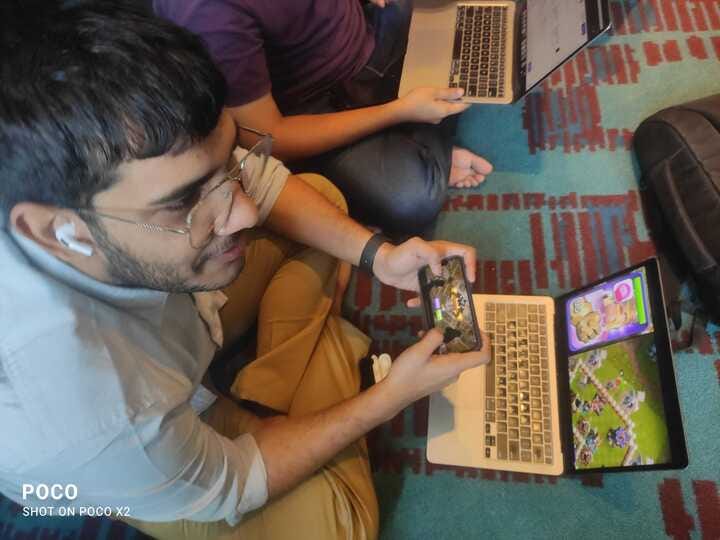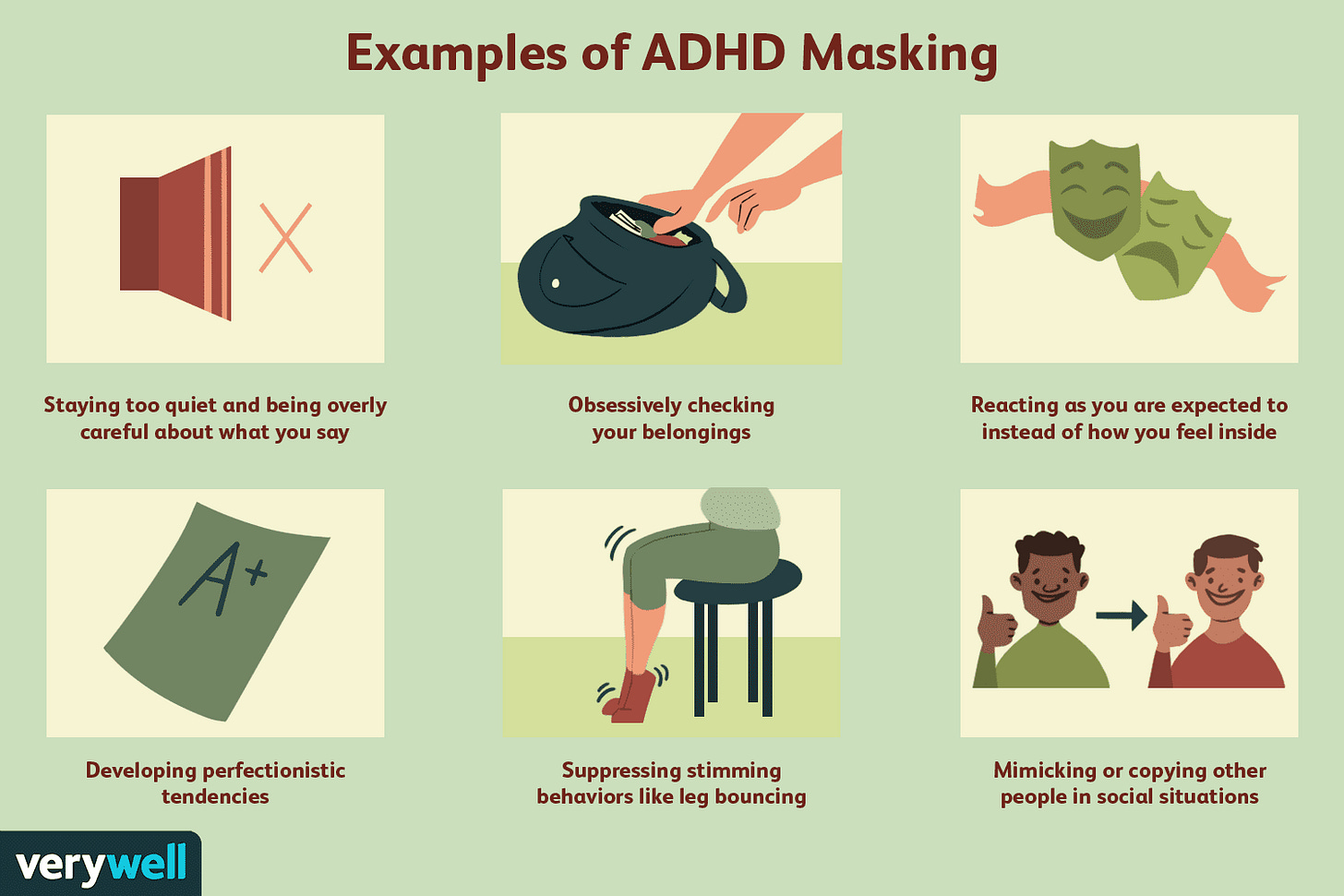Navigating Tech with ADHD
Introduction
Hey Everyone!
I’m Prakash Yogi, a Member of Technical Staff 1 at Fyle. I’ve been with Fyle for over 1.7 years and I’d like to share a bit about myself and how I manage life with ADHD, autism, and being an introvert. 🫠
Working in the tech industry, especially at a startup, can be thrilling and challenging.
As someone diagnosed with ADHD, I’ve found that these challenges often take on unique forms.
In this blog, I’ll share my experiences working as a Member of Technical Staff 1 on the backend team at Fyle, an established startup, and how I’ve navigated the complexities of my role while managing ADHD.
What is ADHD?
ADHD, or Attention Deficit Hyperactivity Disorder, is a condition that affects how people focus, stay organized, and control impulses. It can make paying attention to tasks, managing time, or staying organised harder. However, ADHD also comes with unique strengths, like the ability to hyperfocus on interesting tasks. This mix of challenges and strengths shapes how people with ADHD navigate work and life.
A simple representation of ADHD:
This is me “Preparing for a demo”, during a hackathon (others are working) (Spoiler: We won that hackathon).
Struggles with ADHD
Living with ADHD means dealing with certain struggles daily. For example, staying focused on repetitive tasks like documentation or meetings can be tough, leading to procrastination or missed deadlines. Time management is another common challenge—small tasks can take much longer than expected, or important deadlines might get overlooked. Distractions can also be a major hurdle; something as simple as a notification or a side conversation can derail progress for hours. Juggling multiple projects or responsibilities at once can create an overwhelmed feeling. These struggles can be frustrating, but finding effective tools and routines helps manage them.
ADHD as a Superpower
While ADHD presents challenges, it also comes with unique strengths. One of the biggest advantages is hyperfocus—the ability to dive deeply into tasks that are exciting or challenging, leading to intense productivity and creativity. For instance, when working on complex system design or debugging, I can immerse myself for hours, often losing track of time. Many people with ADHD are also quick problem-solvers and can think outside the box. In fast-paced and ever-changing environments like startups, these traits can be a superpower, enabling those with ADHD to excel in roles requiring adaptability and innovation.
Hyperfocus:
Navigating Social Life with ADHD
Managing ADHD extends beyond the workplace and into social settings. ADHD can make it challenging to follow conversations, remember details, or stay engaged during social events. For instance, I might find myself distracted by side conversations or struggle to stay focused during long gatherings. This can sometimes lead to misunderstandings or feeling disconnected. To navigate this, I use strategies like setting reminders for important details and taking breaks when needed to recharge. Embracing these strategies helps me maintain meaningful connections while managing the unique aspects of ADHD.
PS: I’m probably the most muted person in our team sync-ups—mainly because I tend to say anything that comes to mind! 😅
ADHD Masking
ADHD masking is when someone with ADHD hides or suppresses their symptoms to fit in or avoid judgment. This might involve pretending to be more focused, organized, or socially engaged than they feel. While it can help in the short term, masking is often mentally exhausting and can lead to burnout, as it requires constant effort to manage behaviour and emotions without fully addressing the underlying challenges of ADHD.
DON’T DO THIS I REPEAT, DON’T DO THIS!!!
Discovering My ADHD
Before diving into the specifics of my work at Fyle, it’s important to provide some context on my journey with ADHD.
I wasn’t diagnosed until after I had started my career, though I had always noticed certain patterns in my behaviour—difficulty focusing on tasks that didn’t interest me, a tendency to hyperfocus on certain projects, and challenges with time management.
These traits, while common in many, were amplified in my case, leading me to seek professional help.
Receiving an ADHD diagnosis was a turning point; it helped me understand myself better and devise strategies to manage my work more effectively.
The Startup Environment: A Double-Edged Sword
Startups are known for their fast-paced, dynamic environments, where adaptability and quick problem-solving are key.
For someone with ADHD, this can be both a blessing and a curse.
On the one hand, the variety of tasks and the constant change can keep my interest piqued, preventing the boredom that often triggers my inattention.
On the other hand, the lack of structure and the need to juggle multiple responsibilities can sometimes overwhelm me.
At Fyle, I’ve had to learn how to balance these dynamics.
The company’s culture is supportive, but like any startup, it comes with its share of high-pressure situations. Learning to manage my workload, prioritize tasks, and maintain focus has been an ongoing process, one that I’ve had to refine over time.
Strategies for Success
Task Management Tools: One of the most effective strategies I’ve adopted is using task management tools like ClickUp. Breaking down my tasks into smaller, manageable chunks helps me stay on track and prevents me from getting overwhelmed by the bigger picture. I’ve learned to prioritise tasks based on deadlines and importance, which has significantly improved my productivity.
Creating Structured Routines: ADHD often makes it difficult to maintain a consistent routine, but I’ve found that establishing certain daily habits has helped me stay grounded. For example, I start my day by reviewing my tasks and setting specific goals. This structure gives me a clear roadmap for the day, making it easier to stay focused.
Leveraging Hyperfocus: One of the unique aspects of ADHD is the ability to hyperfocus on tasks that genuinely interest me. I’ve learned to harness this by aligning my work with projects that engage me deeply.
For instance, I’ve taken on more system design tasks, which I enjoy and excel at, allowing me to contribute meaningfully while staying in my zone of interest.
Open Communication: At Fyle, the culture encourages open communication, and I’ve found it helpful to be transparent with my team about my ADHD. This openness has fostered understanding and flexibility, allowing me to work in a way that suits my strengths while accommodating my challenges.
Challenges and Growth
Despite the strategies I’ve implemented, there are still days when managing ADHD feels like an uphill battle. Deadlines can sometimes trigger anxiety, leading to procrastination, and the startup environment’s inherent unpredictability can sometimes throw me off balance.
However, each challenge has also been an opportunity for growth. I’ve learned to be kinder to myself, recognising that setbacks are a part of the process.
More importantly, I’ve developed a deeper understanding of how ADHD affects me and how I can work with, rather than against, it.
Conclusion
Working at Fyle has been a rewarding experience, both professionally and personally.
The startup environment, with all its challenges, has pushed me to develop strategies to manage my ADHD effectively.
It’s an ongoing journey that has taught me resilience, adaptability, and the importance of self-awareness.
For anyone with ADHD working in tech or considering a career in startups, my advice is to embrace your unique working style, leverage your strengths, and seek out environments that support your growth.






